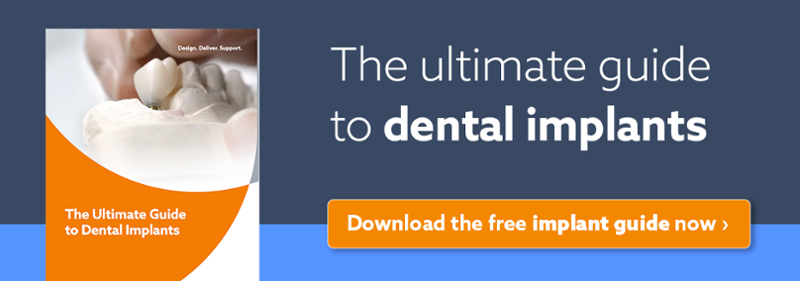The total edentulous population worldwide is approximately 6-10%. The demand for implant-supported prostheses is anticipated to expand considerably over the coming years for several reasons, including the aging baby boomer population. As patients become increasingly well-informed about the possibilities of implant treatment, more are asking for All-On-Four by name. (All-on-4® is the trademarked name belonging to Nobel Biocare Services AG.)
All-On-Four is a unique, cost-effective treatment concept that provides the patient with a provisional full-arch prosthesis soon after surgery. Although the technique may seem complicated, the procedure may be easier than you imagine. All-On-Four is tried and tested, and tilting the posterior implants enhances bone support, allowing for insertion into stronger and higher quality anterior bone. Carefully evaluating patient suitability and meticulous treatment planning helps to ensure this procedure is smooth and successful. When taken step-by-step, the entire process is quite straightforward.
A thorough evaluation is essential to identify if the patient is suitable for treatment and to ensure the outcome is predictable. Four critical initial steps include:
-
Evaluating patient expectations and their medical history. Any medical conditions that could affect the treatment outcome or suitability must be identified.
-
The patient’s dental history requires careful consideration, including their commitment to oral hygiene and any known parafunctional habits like bruxism.
-
A panoramic or cone beam CT scan is essential before reaching the final decision.
-
Any remaining teeth must be evaluated and the general condition of the soft tissues assessed.
Once the patient’s suitability is determined, treatment planning can begin, always considering the final restoration.
Treatment Planning
The next phase is to decide if the patient is suitable for a fixed or removable prosthesis using several diagnostic factors, which include: the incisal edge, lip support, the smile line, the patient’s occlusion and the amount of restorative space available. Determining the desired incisal edge positions and the patient’s smile line, and the support required by the upper lip are all factors that must be considered in advance to achieve a good aesthetic outcome. Also, it is critical to ensure there is enough space to fit the prosthesis and to decide if the bone must be reshaped during surgery and the restoration adjusted accordingly.
All-On-Four is specifically designed to maximize the use of available bone and to allow for immediate function. There are some critical considerations when planning treatment.
Points to consider include the following:
-
The edentulous maxilla should have a minimum bone width of 5mm, while minimum bone height from canine to canine should be 10mm.
-
The edentulous mandible should also have a minimum bone width of 5mm, while the minimum bone height between the mental foramina must be 8mm.
-
Any extraction sites must be cleaned thoroughly and preferably avoided during implant placement.
-
Posterior implants are tilted to a maximum of 45o to reduce cantilevers.
-
The distal screw access holes for posterior implants must be located at the occlusal plane of the first or second premolar, or the first molar.
Digital Treatment Planning
Precise implant placement is especially critical with All-On-Four, and digital treatment planning can help to ensure a predictable surgical outcome. Digital 3D models allow you to assess the quality and quantity of available bone and to plan implant placement accurately while avoiding anatomical structures. With digital planning, you can customize and control the angulation of the posterior dental implants, ensuring they are optimally placed. Once treatment is digitally planned, it is your choice as to whether you use guided surgery or freehand surgery. Using a guided pilot drill surgical template or choosing a fully guided surgical template can ensure the entire procedure is easier than you think.
Choosing the right dental lab is a key component in ensuring a successful outcome. They can design and provide an optimal final restoration and will ensure that all critical aspects are considered, such as patient hygiene.
Please remember, our experienced technical team is here to discuss specific treatment plans with you, and we will work with you to help ensure patient satisfaction.
Click here to schedule a consultation with our technical team »

References
https://cdn2.hubspot.net/hubfs/1738471/_GLOBAL/_ARCHIVE/2016/TFM_All-On-4/PDF%20e-book/GMT_48208_All-on-4_ebook_16.1_EN_NA.pdf
Image Source: Nobel Biocare